
Because of Winn-Dixie by Kate DiCamillo, Reading Task
- Subject:
- Arts and Humanities
- Material Type:
- Homework/Assignment
- Date Added:
- 11/11/2012


Because of Winn-Dixie by Kate DiCamillo, Reading Task

Because of Winn-Dixie by Kate DiCamillo, Vocabulary Task

Because of Winn-Dixie by Kate DiCamillo, Writing Task

This lesson plan and assessment takes you on a journey to discover if pollinators find your campus a hospitable home. Core compliant for Grades 3-5, but adaptable to all ages. Are you working with distance learners or in a non-traditional teaching environment? This lesson plan is perfect for you! All you need is a pencil and outdoor space, including sidewalks, local parks, greenways, libraries, and beyond!

Our mission is to inspire the next generation of environmental stewards while protecting our planet's most precious pollinators. The resources we have provided are designed to engage students through observation-based and hands-on learning with a little help from our tiny friends -- the bees! This unit of study has ample resources including teacher guides, video links, material lists, background information, standards mapping, and engaging work for students.
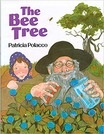
Do you ever get bored when reading? Mary Ellen does! Grampa knows just what she needs, a trip to the bee tree. With half the town following the chase, Mary Ellen and Grampa go off on an adventurethat leads Mary Ellen to make a sweet discovery of her own.Lexile Level: AD680LGuided Reading Level: MGenre: Fiction

Grandpa, also known as the Beeman, and his grandson will delight audiences with lyrical verse and facts about honey bees. Learn all about where bees live, how they make honey, and the tools of the backyard beekeeper. The author also provides factual bee information at the conclusion of the story.Lexile Level: 430L-530LGuided Reading Level: IGenre: FictionPre-Reading
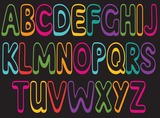
This is practice for students to match beginning sounds to pictures. They will practice identifying the beginning sound and then finding the matching letter.

Students will explore the outdoor classroom finding objects and determining the first sound.

Another venomous attack on the Lincoln administration by the artist of "The Commander-in-Chief Conciliating the Soldier's Votes, no. 1864-31," and "The Sportsman Upset by the Recoil of His Own Gun," (no. 1864-32). Here Lincoln and his cabinet are shown in a disorderly backstage set, preparing for a production of Shakespeare's "Othello." Lincoln (center) in blackface plays the title role. He recites, "O, that the slave had forty thousand lives! I am not valiant neither:--But why should honour outlive honesty? Let it go all." Behind Lincoln two men, one with his leg over a chair, comment on Lincoln's reading. "Not quite appropriately costumed, is he?" comments the first. The second replies, "Costumed, my dear Sir? Never was such enthusiasm for art:--Blacked himself all over to play the part, Sir!" These may be Republicans Charles Sumner and Thaddeus Stevens. Before them is a wastebasket of discarded documents, including the Constitution, Crittenden Compromise, Monroe Doctrine, "Webster's Speeches," "Decisions of Supreme Court," and "Douglass." At left five ballerinas stand beneath a playbill advertising "Treasury Department, A New Way to Pay Old Debts . . . Raising the Wind . . . Ballet Divertissement." Near their feet is a pile of silver and plate, "Properties of the White House." They listen to a fiddler who, with his back turned to the viewer, stands lecturing before them. At right Secretary of War Edwin Mcm.asters Stanton instructs a small troop of Union soldiers waiting in the wings to ". . . remember, you're to go on in the procession in the first Act and afterwards in the Farce of the Election." One soldier protests, "Now, see here, Boss that isn't fair. We were engaged to do the leading business." Nearby an obviously inebriated Secretary of State William Seward sits at a table with a bottle, muttering, "Sh--shomethin's matt'r er my little bell: The darned thing won't ring anyway cĚ_Ąonfixit'." Seward reportedly once boasted that he could have any individual arrested merely by ringing a bell. He was widely criticized for his arbitrary imprisonment of numerous civilians during the war. On the floor near Seward sits Lincoln's running mate Andrew Johnson, a straw dummy, with a label around his ankle, "To be left till called for." At far right Navy Secretary Gideon Welles slumbers, holding a paper marked "Naval Engagement, Sleeping Beauty, All's Well That Ends Well." In the background abolitionist editor Horace Greeley bumbles about moving scenery and complaining, "O bother! I can't manage these cussed things." Union general Benjamin F. Butler (directly behind Lincoln), dressed as Falstaff, recites, "We that take purses, go by the moon and seven stars; and not by Phoebus! I would to God, thou and I knew where a commodity of good names were to be bought!" He holds a sign "Benefit . . . Falstaff . . . Beauty and the Beast." By this time Butler had achieved notoriety as a dissolute plunderer. To Butler's right a man (who might be the stage manager) orders the crew, "Get ready to shift there 'ere Flats for the Temple of Liberty." The artist of this and nos. 1864-30 and -31 was an exceptionally able draftsman. Judging from the acidity of these satires, he may have been a Southerner, perhaps a Baltimorean. The only satires of the time that compare in artistic quality and political venom are those of Adalbert Volck.|Signed with monogram: CAL?|Title appears as it is written on the item.|Weitenkampf, p. 141.|Forms part of: American cartoon print filing series (Library of Congress)|Published in: American political prints, 1766-1876 / Bernard F. Reilly. Boston : G.K. Hall, 1991, entry 1864-32.
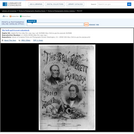
An illustrated sheet music cover for campaign music honoring Constitutional Union party candidates John Bell and Edward Everett. The candidates' bust portraits are framed in floral and acanthus tracery. In the upper right a streamer with stars and stripes hangs on the twigs which sprout from the rusticated wooden letters of Everett's name. Below is an arrangement of motifs, including an eagle with shield, a cannon, flags, and a fasces. In the distance (left) is a harbor with several ships.|Entered . . . 1860 by Firth, Pond & Co.|Sarony, Major & Knapp Liths. 449 Broadway, N.Y.|Title appears as it is written on the item.|Published in: American political prints, 1766-1876 / Bernard F. Reilly. Boston : G.K. Hall, 1991, entry 1860-17.

In this lesson, students learn about what it means to belong and how to include others. Students will identify similarities and differences between themselves and a partner but understand how they are still part of the same community.

How does media coverage of migration shape how Americans’ views of migration by youth? Why are so many young people trying to migrate to the United States? What are their journeys like? What happens when they get to the U.S.-Mexico Border? What role does U.S. policy play in this situation? These are the major questions that students will explore in this 4-day mini-unit, which results in media literacy and creative assessments.
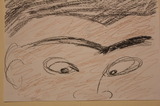
This resource aims to generate ideas and possibilities about how to advance student understanding of logic in writing beyond the notion that logic is always a collection of data points or a reference to facts. Instead of reducing logic to numbers and statements, this source hopes to introduce students and teachers to the existential questions that are always involved in the logical appeals of a text: how do we know what we know and why does it matter?

In this history lesson, students learn about the epic life and exemplary character of Biddy Mason, a woman who was born into slavery in the Deep South, walked to California as part of a pioneer caravan, fought for her freedom in court, and died a millionaire real-estate investor in Los Angeles. In addition to the highs and lows of Biddy’s dramatic life, this lesson asks students to study how she demonstrated the virtues of courage and charity, both in securing freedom for herself and her family and, later, using her fortune to invest in her community and provide relief to poor Californians of all races and religions.The Woodson Center's Black History and Excellence curriculum is based on the Woodson Principles and tells the stories of Black Americans whose tenacity and resilience enabled them to overcome adversity and make invaluable contributions to our country. It also teaches character and decision-making skills that equip students to take charge of their futures. These lessons in Black American excellence are free and publicly available for all.

Another swipe at Whig candidate Winfield Scott's manipulation by antislavery Whigs Seward and Greeley. Here, Scott is a fly caught in a large web, spun by spiders Greeley (left) and Seward (right). Scott exclaims, "I think I've got myself into a hobble!" Greeley, hanging from a thread, decides, "I must hurry up & cover him with our slime as fast as possible!" Seward adds, "I hope he won't break through before I get him secured!" At lower left, Massachusetts Whig Daniel Webster and New York editor James Watson Webb look on. Webster remarks, "What an extraordinary web, Webb!" Webb replies, "Yes it's one of that crafty old spider Seward's and he has caught a large fly who wont get out Scot free--Can't you stir it up a little, Webster!"|Published by John Childs, 84 Nassau St. N. York.|Signed with monogram: EWC (Edward Williams Clay).|Title appears as it is written on the item.|Davison, no. 204.|Weitenkampf, p. 107.|Forms part of: American cartoon print filing series (Library of Congress)|Published in: American political prints, 1766-1876 / Bernard F. Reilly. Boston : G.K. Hall, 1991, entry 1852-30.

** This book has been donated to the public domain.**
From the introduction:
Hello there . . . ! Welcome to English Banana.com’s Big Grammar Book. It’s the third fantastic book from English Banana and the aim this time is to practise grammar, grammar and, er, more grammar!
It’s jam-packed from cover to cover with a great selection of photocopiable worksheets taken from the popular English Banana.com website. We wanted to provide teachers with a really useful book of no-nonsense grammar worksheets that they can dip into and use in class with students at Entry Level (ESOL Core Curriculum Entry Levels 1 & 2). It is also ideal for students to work with at home since the answers are all printed at the back.
The book is divided into four parts and is graded in difficulty, so that it begins with some basic stuff and builds up to more challenging grammar activities. It features a selection of Essential English worksheets which provide practice for crucial basic areas of knowledge for learners at Entry Level, like using numbers, writing the alphabet, spelling days and months correctly, and so on.

Go Away, Big Green Monster! Ed Emberley's tale about a scary, multicolored monster is used to help students build their reading fluency and word recognition skills. In this lesson, students chorally read the story and then point out familiar color words or sight words that appear in the story. After finishing the story, students are introduced to four different literacy center activities that include participating in a read along, building word families with story words, playing a memory game with color words from the story, and retelling story events using sentence strips. In the sessions that follow, students create their own artwork of the big green monster and use that artwork to help them write a story. Students use both self- and peer-editing to improve their writing. Completed stories are either published on the Internet or in a class book.

A checklist in student language used by elementary students to self-assess their biographies.
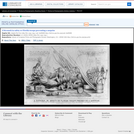
Another parody of Van Buren administration efforts to end the long and costly Second Seminole War in Florida. The War Department was regularly subjected to public and congressional attacks for cruelty, waste, and incompetence in its prosecution of the war. It drew especially heavy fire for the introduction of Cuban bloodhounds to hunt the Seminoles in early 1840. (See "The Secretary of War," no. 1840-5). Several dandified soldiers lounge in a commodious tent as a corps of uniformed bloodhounds stand guard outside. Their standard says "Puppy Guard Sentinel." The soldiers are surrounded by luxury items like "Windsor Soap (soft)," cigars, and "eau de cologne," and one is fanned by an Indian squaw. One soldier remarks, brushing his long hair, "I say Major, as we are in no danger of losing our scalps, we may as well put our Soap locks on the Peace Establishment." Another, playing chess, says, "Since our new Allies from Cuba have joined us, we can have a quiet game of Chess without any fear of a check from our red friends in the Swamp." An older, pipe-smoking soldier laments, "Ah! the Army is not what it was! Where's the Hero of Tippecanoe." (He refers to Whig presidential candidate William Henry Harrison.)|Lith. & pub. by H.R. Robinson 52 Cortlandt St. N.Y. & Pennsa Ave Washington D.C.|Signed with monogram: HD (Henry Dacre?).|Title appears as it is written on the item.|Fowble, no. 338.|Murrell, p. 144.|Weitenkampf, p. 59.|Forms part of: American cartoon print filing series (Library of Congress)|Published in: American political prints, 1766-1876 / Bernard F. Reilly. Boston : G.K. Hall, 1991, entry 1840-6.